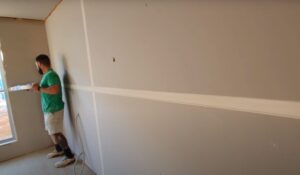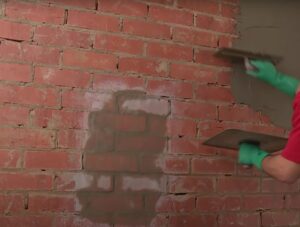GIB Stopping and Fixing: The Pros Know Best
The art of GIB stopping and fixing isn’t just about smoothing out a surface or patching up a hole; it’s a meticulous process that demands skill, precision, and a deep understanding of the materials and tools at hand. For Aucklanders preparing to embark on home renovations, it might be tempting to take the DIY approach. However, there are strong arguments in favour of hiring a professional, especially when the task requires exterior plastering and solid plastering.
GIB in the Auckland Climate
Auckland’s diverse climate, with its humid summers and rainy winters, can significantly influence how GIB board behaves. In suburbs like Howick, where coastal winds can carry moisture, or in Henderson with its occasional heavy downpours, the installation and maintenance of GIB can become even more challenging. Exterior plastering, in particular, can become compromised if not correctly sealed against these conditions.
Local Bylaws and Regulations
The Auckland Council has stringent regulations regarding building and renovation projects, especially those impacting the structural integrity and safety of a home. Certain bylaws might affect how plastering should be approached in different areas. For example, in Manukau, specific building codes need adhering to, ensuring that structures can withstand the local climate. Similarly, the North Shore has its own set of regulations, ensuring that homes can endure the salt-laden air. Failing to meet these standards can result in penalties or mandatory modifications later on, costing more in the long run.
The Intricacies of GIB
- Material Knowledge: GIB boards aren’t a one-size-fits-all solution. Depending on the room’s purpose, different GIB boards might be needed. There’s GIB Aqualine® for wet areas like bathrooms, or GIB Noise Control® for spaces needing soundproofing.
- Tools and Techniques: From joint knives to sanding tools, the range of equipment required for GIB stopping and fixing is extensive. Using the wrong tool or technique can lead to unsatisfactory results.
- Compound Selection: Not all stopping compounds are suitable for every task. Some are ideal for bedding tapes, while others are better suited for top coats. Professionals understand the difference and can make the right choice.
Why Not DIY?
At first glance, plastering might seem straightforward. But even minor imperfections can become glaringly obvious once paint is applied. There’s also the challenge of ensuring consistency across vast wall expanses.
For those in Mt Wellington, dealing with the impact of volcanic soil on home foundations, or those in Newmarket facing challenges with older homes, the subtleties of plastering can be even more pronounced. Attempting a DIY could result in costly repairs or adjustments later on.
Engaging the Pros in Auckland
Auckland, with its unique climatic challenges and specific local bylaws, demands a level of expertise that only a professional plasterer can truly bring to the table. For homeowners eager to get the best results for their investment, understanding the intrinsic value of hiring a seasoned plasterer is essential.
Precision and Perfection
A trained eye can spot even the tiniest imperfections. Professionals, having honed their skills over numerous projects, can achieve a level of precision that DIY enthusiasts might struggle to match. This precision ensures that the finished surfaces are ready for painting or wallpapering without any imperfections that might mar the final appearance.
Time Efficiency
Professional plasterers have streamlined their processes over time. They know exactly how to mix compounds, how long they take to dry, and the best techniques for each type of wall or ceiling surface. This efficiency means your renovation or repair job gets done faster, letting you get back to normal life sooner.
Expertise with Materials
In the evolving world of construction, new materials and technologies emerge regularly. A professional plasterer in Auckland remains updated on these advancements, ensuring that they use the best and most appropriate materials for your specific needs. Whether it’s understanding the intricacies of different GIB boards or knowing which compound offers the best finish for a particular environment, their expertise proves invaluable.
Navigating Challenges
Every home and project comes with its unique set of challenges. Be it the curves of a heritage home in Remuera or the modern lines of a new build in Ponsonby, a professional plasterer can adapt their techniques. They can navigate around obstacles, ensuring that every inch of the surface gets the attention it deserves.
Warranty and Peace of Mind
Most professional plasterers in Auckland offer warranties on their work. This warranty isn’t just a piece of paper; it’s a testament to their confidence in the quality of their work. It provides homeowners with peace of mind, knowing that if any issues arise due to the plastering, they are covered.
Cost-Effective in the Long Run
While hiring a professional might seem like a significant initial expense, it’s a decision that often proves cost-effective in the long run. Mistakes in plastering can be costly to fix, especially if they lead to further issues like moisture seepage or structural weaknesses. A professional ensures the job is done right the first time, saving potential repair costs down the road.
In a city as dynamic and diverse as Auckland, where every suburb has its character and challenges, the expertise of a professional plasterer becomes an invaluable asset. They bring with them a promise of quality, durability, and a finish that stands the test of time.
Advantages vs Limitations: The GIB Table
| Type of Plaster | Advantages | Limitations |
| GIB Aqualine® | Water-resistant, durable | Requires specific sealants |
| GIB Noise Control® | Soundproofing capabilities | Higher cost |
| Exterior Plaster | Weather-resistant, durable | Needs professional application |
Making the Right Decision for Your Auckland Home
While there’s a certain satisfaction in tackling home improvement tasks, GIB stopping and fixing isn’t one to be underestimated. With the variety of tools, materials, and techniques involved, not to mention Auckland’s unique climate and bylaws, it’s a task best left to the professionals. Ensuring a flawless finish now can save time, stress, and money in the long run. For peace of mind and guaranteed quality, consider engaging a GIB stopping and fixing expert in Auckland for your next renovation.
Frequently Asked Questions about GIB Stopping and Fixing in Auckland
What is the difference between GIB stopping and GIB fixing? GIB fixing refers to the process of attaching GIB board panels to framing, while GIB stopping involves the application of plaster compound to seams and screw holes to create a smooth finish for painting or wallpapering.
Is it possible to do GIB stopping and fixing as a DIY project? While some homeowners might attempt these tasks as DIY projects, achieving a professional and smooth finish requires experience, expertise, and the right tools.
How long does it take for plaster to dry after GIB stopping? The drying time for plaster after GIB stopping can vary depending on the compound used and the environmental conditions, but typically, it takes 24-48 hours.
Do Auckland’s climatic conditions affect plaster drying times? Yes, Auckland’s high humidity can impact drying times, which is why it’s crucial to ensure adequate ventilation and possibly use dehumidifiers in particularly damp conditions.
Are there any Auckland council bylaws that affect GIB work? There might be specific bylaws, especially for historic or heritage properties in areas like Parnell. Always check with the local council to ensure compliance.
Why might a professional plasterer be a better choice than DIY for Auckland homes? Professional plasterers have the knowledge to choose the right materials and tools for Auckland’s unique conditions, ensuring longevity and a quality finish.
What tools are essential for GIB fixing? The primary tools for GIB fixing include GIB lifter, screw gun, and a straight edge or T-square, among others.
Can I paint immediately after the plaster dries? It’s advisable to wait for the plaster to cure fully, which might take longer than just the initial drying. A professional will often recommend a waiting period before painting.
How can I tell if my plastered surface is ready for painting? The plaster should be completely dry, with no damp spots, and smooth to touch. If in doubt, consult with a professional.
Are there specific paint types best suited for freshly plastered surfaces? Yes, there are paints specifically designed for new plaster. They allow the plaster to breathe and dry out fully.
Remember, when it comes to home renovations, especially tasks as vital as GIB stopping and fixing, it’s always best to consult with experts to get the job done right.

